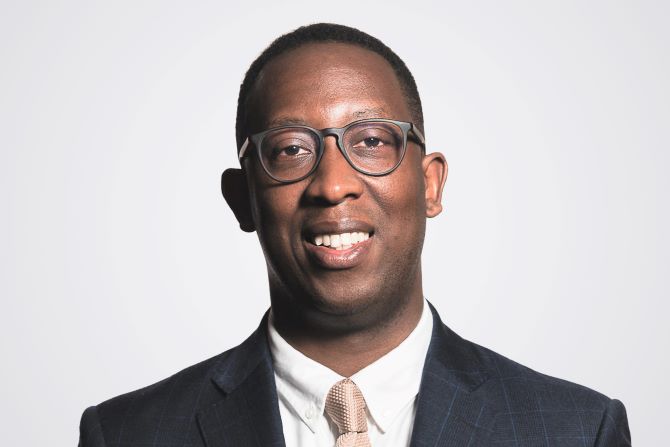‘For me, summer reading lists often start with big intentions and end with much less ambitious actions. A bit like New Year’s resolutions – or even investment stewardship on climate,’ writes Lindsey Stewart, director of stewardship research and policy at Morningstar, in his most recent LinkedIn newsletter.
In it, he talks about everything from the power of proxy advisers to questioning the number of ESG proposals in the most recent proxy season, as well as offering up some summer listening recommendations.
Stewart certainly has experience tracking how many of those ambitions stack up. Some of his followers and subscribers might not realize it but he is relatively new to the ESG game. ‘It always surprises people when I tell them I’ve only been doing an ESG-focused role for the last two years,’ he tells Governance Intelligence sister publication IR Magazine.
His path to net-zero started before that, though. Back in 2019, Stewart had moved into a role at KPMG, where he was tasked with gathering investor views and building better links between the auditor community and the investor community. ‘The ESG thing just seemed to find its way into every single conversation,’ he says.
This was, he points out, just a few years after the Paris Agreement had been signed, TCFD had finalized its recommendations and ‘people were starting to think much more seriously about their emissions’. It was also a period of snowballing ESG conversations and increasing inflows into sustainability funds.
Stewart’s career was also increasingly focused on ESG, with a role at the Financial Reporting Council (FRC). ‘As the head of stakeholder engagement, I was doing a lot of work on the 2020 version of the investment stewardship code, which had its first year of implementation in 2021 while I was [at the FRC],’ he explains. ‘There was a lot more thinking around how to effectively engage with companies on topics like climate [and] social issues.’
These themes have continued into his role at Morningstar, which he took up in 2022. ‘I’m writing a lot more about corporate governance and the investment stewardship implications of ESG and sustainability themes,’ he explains.

ESG in the granular
Stewart joined the ESG conversation not only as it gained momentum but also as it heated up, with backlash coming hot on the heels of greater company – and investor – focus.
It was a period when companies, investors, regulators and wider stakeholder groups were prompted to give ‘very serious and considered thought to exactly how ESG would be integrated into their decision-making processes,’ Stewart says. ‘Companies had to consider how ESG would manifest in their communications with end-investors and deeply consider what it meant to report on climate in a meaningful way.’
For example, what does [your engagement] mean on Scope 1 versus Scope 2 or Scope 3? What are the expectations, what goals should be set for companies?
‘We really got a much more granular picture of what sustainability reporting would actually mean as a result of having gone through that process,’ Stewart explains. ‘We also came out with a lot of answers we probably hadn’t applied enough thought to before: the difference in materiality views between Europe and the US – and other jurisdictions – for example.’
To buy or hold
What does he see on the stewardship side today? ‘Investors have certainly taken a much more structured view of how to integrate climate issues in particular – but also wider sustainability and social issues – into their evaluation of the value of assets over the long term, into how they’re going to decide whether they’re going to buy or hold certain securities,’ he says.
‘That has become a lot more technically sophisticated, which has brought both benefits and drawbacks. It has created blind spots where there’s been a focus on climate to the exclusion of other material issues, particularly on the social or human rights side – those less easily quantifiable themes.’
He notes that ‘investors can still be taken by surprise in those areas’, adding that when talking about these issues more broadly, ‘we don’t always find the language to talk meaningfully to the various stakeholders involved in these issues about how decisions are being made.’
Stewart points to the ‘sheer breadth and lack of clarity around ESG’ – even as the United Nations-coined term celebrates its 20th anniversary – as feeding into ‘anti-ESG’ narratives. Now though, he feels the ESG universe is entering ‘a more mature phase’, particularly as reporting moves from voluntary to mandatory.
‘We’re going to move into more of a business-as-usual phase [on ESG], where we have a structured regulatory framework to discuss such issues,’ he predicts.
Forced hand, fresh eyes
For companies, this shift toward mandatory ESG reporting presents an opportunity for a ‘fresh look’ at their reporting, says Stewart: ‘Companies should be thinking about how they can put together a coherent story that communicates value, particularly to investors. Those investors should be clear on how a company’s sustainability strategy ties in with the wider strategy and how that feeds through to delivering value to providers of financial capital.’
He does, however, note objections around the weight of some ESG reporting requirements – complaints Stewart describes as ‘justified concerns’ in a lot of areas. ‘It certainly isn’t easy to do,’ he concedes. ‘But the best reporters should view the move to mandatory as an opportunity to communicate more effectively and build competitive advantage in the market.’
With this comes the final nail in the era of ‘adding a few glamorous statistics to your sustainability report, which comes out six months after the rest of your financial reporting’.
Companies that have been ‘keeping their eye on the ball’ understand that the reporting they’re doing ‘has to be of a rigorous and material nature that is of benefit to the investment decision-maker,’ says Stewart, adding that the ‘stakes have been raised’.
New questions
Like much that has changed in ESG in the relatively short period since Stewart dived into sustainability, the more answers you dig up, the more new questions need answering. And this is really at the crux of Stewart’s answer when asked what he’d be doing if he wasn’t writing about this topic.
‘The research I’ve been doing has prompted me to think very deeply about how end-investors can get an easy-to-understand answer when it comes to aligning their own personal values and priorities around sustainability and ethics,’ he says. ‘That is not simple to do, even for somebody with considerable experience who spends all day doing that kind of thing. I think a lot about how we can use new technology to improve what’s already there to bring those answers to the investor in a much more accessible way.
‘I try to integrate that into my research but, if I wasn’t doing this, maybe I’d be launching a tech startup trying to answer those questions.’









